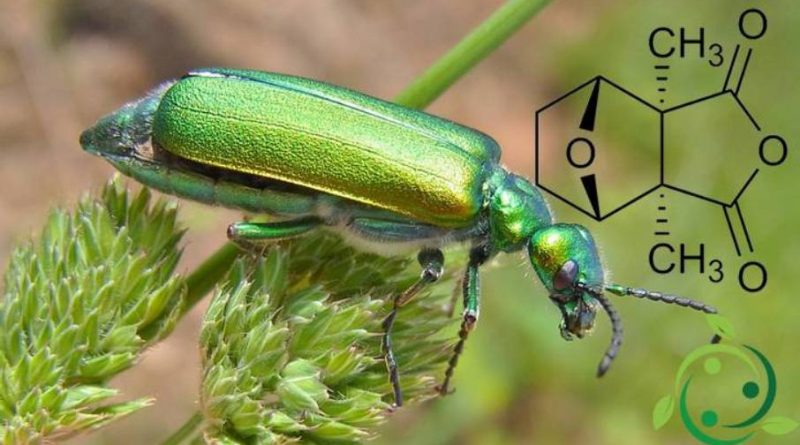Cantharidin
Cantharidin
Cantharidin, whose brute or molecular formula is: C10H12O4, is an active ingredient contained in Lytta vesicatoria which is a beetle of the Meloidae family.
This active principle is present above all in the elytrons of this beetle in the percentage varying between 0.5 and 1%.
Cantharidin is an active ingredient that is mainly used in the dermatological treatment of warts and used in the past as an aphrodisiac, anti-inflammatory and also as a poison.
Cantharidin, in the past, was extracted, using a solvent, from the dust of dried insects and has a characteristic, unpleasant odor and pungent bitter taste. Today this compound is obtained by synthesis.
It occurs in colorless crystalline lamellas that have a melting temperature of 218 ° C, insoluble in water but soluble in oils.
Cantharidin is also used in therapy in the case of Molluscum contagiosum infection.
This substance is not recommended for people with known hypersensitivity to the drug and should not be ingested because it is highly harmful.
In the case of warts a small dose is used directly on the lesion which is removed after 4-6 hours.
Undesirable effects include irritation, erythema, pain.
Warning: The information given is not medical advice and may not be accurate. The contents are for illustrative purposes only and do not replace medical advice.

